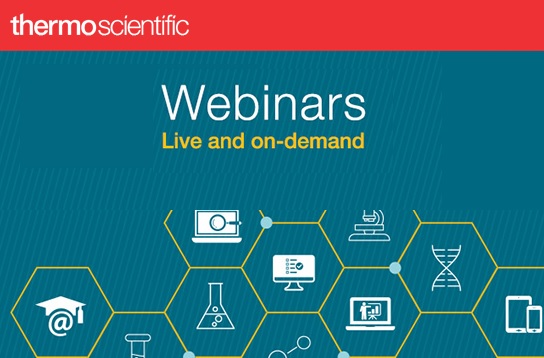Automated online µSPE cartridge clean-up of QuEChERS extracts before LC-MS/MS and GC-MS/MS analysis of pesticides in foods

Thermo Fisher Scientific: Automated online µSPE cartridge clean-up of QuEChERS extracts before LC-MS/MS and GC-MS/MS analysis of pesticides in foods
The trend for multi-residue pesticide analysis is towards faster, simpler, more generic methods of extraction with minimal, if any, clean-up to facilitate higher sample throughput. But this approach can result in extracts with high levels of matrix co-extractives, which will inevitably lead to faster contamination of LC–MS/MS and especially GC–MS/MS systems. The reluctance to use a cartridge SPE clean-up step most likely results from the time required for manual procedures and time taken to achieve the optimum balance between removal of co-extractive without loss of analytes.
This webinar will highlight an automated optimized online miniaturized cartridge clean-up approach providing more effective clean-up of QuEChERS extracts to overcome the analytical challenges faced by laboratories undertaking pesticide residue analysis.
Key Learning Objectives:
- Understand the configuration, operation, flexibility and ease of use of an automated online µSPE setup with GC–MS and LC–MS analysis
- Learn how optimized sorbent blends can yield excellent results from GC–MS/MS and LC–MS/MS multi-residue pesticide analysis in different sample types
- Discover how µSPE can increase robustness, reduce system maintenance and increase laboratory productivity
Who should attend?
- Pesticide residue chemists
- Contract testing laboratories
- Analysts with an interest in automation of sample clean-up for residues and contaminants
Presenter: Dr. Daniela Cavagnino (Product Marketing Manager for Gas Chromatographs and GC Autosamplers, Thermo Fisher Scientific)
Dr. Daniela Cavagnino received a Master’s Degree in Chemistry at the University of Milan, Italy. She started her career in gas chromatography at Thermo Fisher Scientific spending several years in the R&D laboratories working on GC technology innovation. Then, she conveyed her technical background into product management and marketing management roles with more than 15 years’ experience in promoting GC/GCMS technology and applications in several different market segments. During her career, she has participated as author and co-author in technical publications and actively operated as lecturer at international conferences.
Presenter: Dr. Cristina Jacob (Product Manager of LC TriPlus Autosamplers, Thermo Fisher Scientific)
Dr. Cristina Jacob is Product Manager of LC TriPlus Autosamplers at Thermo Fisher Scientific. She received her bachelor’s in chemistry from the University of Évora, Portugal, followed by a Ph.D. in organometallic chemistry from the University of Lisbon, Portugal. Following a postdoctoral appointment at the National Center for Toxicological Research (NCTR) at the US Food & Drug Administration, conducting research in toxicological studies, and at LABERCA, in France, conducting food safety metabolomics studies, she became a Research Scientist at Bioaster’s Metabolomics and Proteomics Technology Unit, in France. Dr. Jacob then moved to the United States as a visiting scientist at US FDA NCTR where she worked on the development of mass-spectral based analytical methodologies to elucidate mechanisms of toxicity before joining the TSQ Product Management team at Thermo Fisher Scientific in 2018.